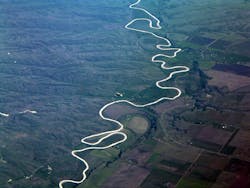Hypoxia Task Force Report Shows Progress
A report released by the Hypoxia Task Force highlights progress made during the past five years in targeting funds, increasing agricultural conservation practices, developing state nutrient reduction strategies and improving science and monitoring of water quality in the Mississippi River Basin. The report recommends that the Task Force work to accelerate implementation of nutrient reduction activities and identify ways to measure progress in reducing pollution at a variety of scales, from small streams to the mouth of the Mississippi River. The Task Force has also released a new federal strategy focused primarily on providing support to states as they develop and implement nutrient reduction strategies.
The report’s findings include:
States are making progress in nutrient reduction strategies: Five states have finalized or released drafts of nutrient reduction strategies, and the remaining seven states expect to have at least draft strategies completed by late 2013 or early 2014.
Assistance for conservation practices is strong: The U.S. Department of Agriculture continues to provide strong assistance for conservation practices through a variety of actions, including the Mississippi River Basin Healthy Watersheds Initiative.
Science and monitoring continues to improve: In the past few years the Task Force has improved the scientific tools and efforts used in the Mississippi River Basin, including establishing a long-term water quality monitoring network, conducting basin-wide assessments and using models to increase understanding of nutrient loadings, and coordinating hypoxic zone research.
Goal for reducing hypoxic zone in Gulf of Mexico remains reasonable: Despite incremental improvements and significant investments to reduce nutrient pollution, the goal of reducing the size of the hypoxic zone to 5,000 square kilometers is unlikely to be achieved in 2015.
In the coming years, federal agencies will:
- Provide more scientific and technical assistance, such as monitoring and modeling efforts to help demonstrate progress locally, basin-wide, and in the Gulf, as well as additional research to better target conservation practices on the ground.
- Work on economic analyses of conservation practices to help producers identify the conservation practices that provide the most economic and environmental benefits.
- Support regulatory activities that provide reductions in nutrient runoff.
- Use innovation and leveraging to offer financial and technical assistance.
- Explore ways to expand market-based approaches.
Source: EPA


